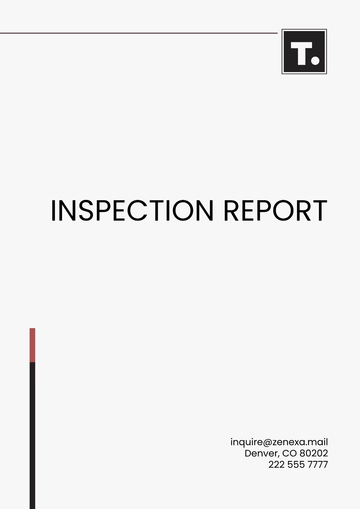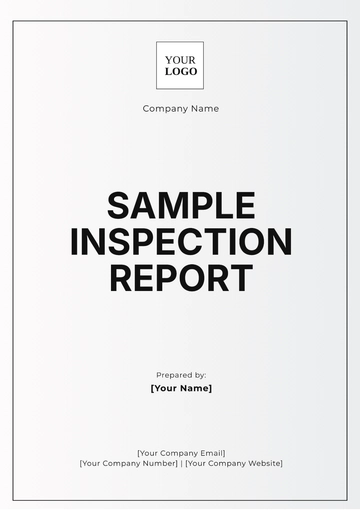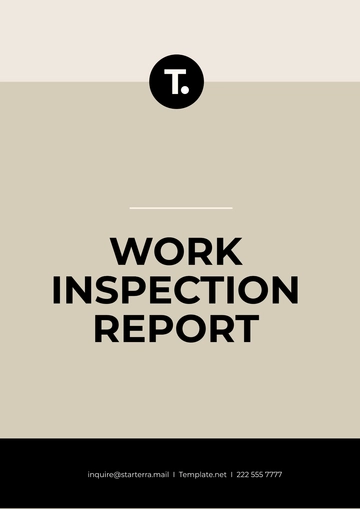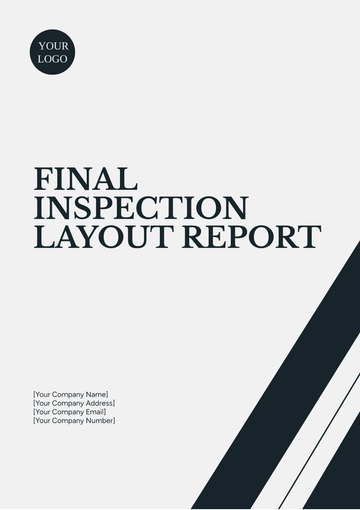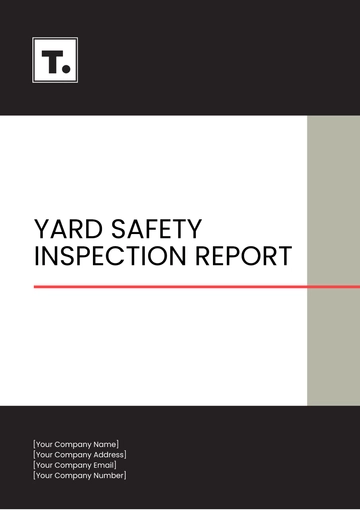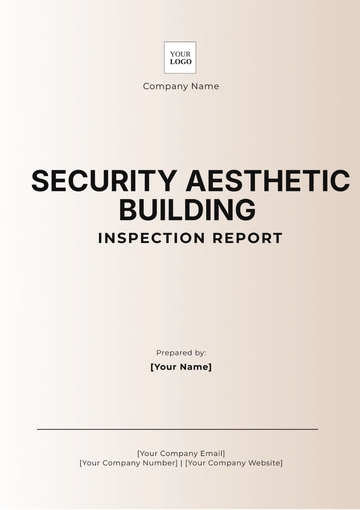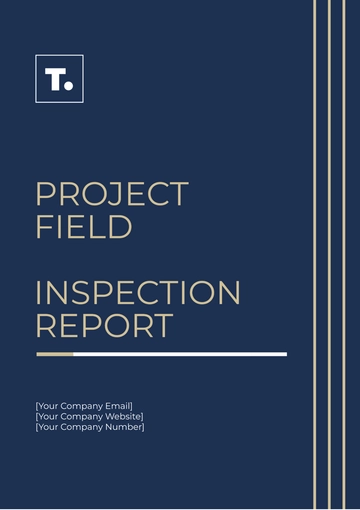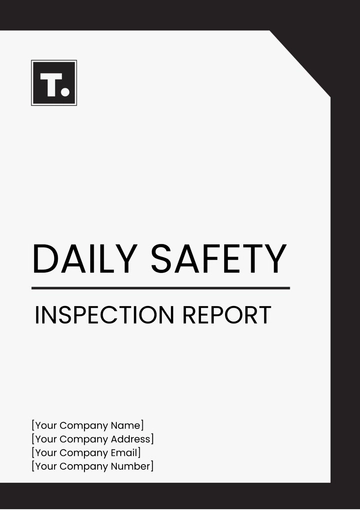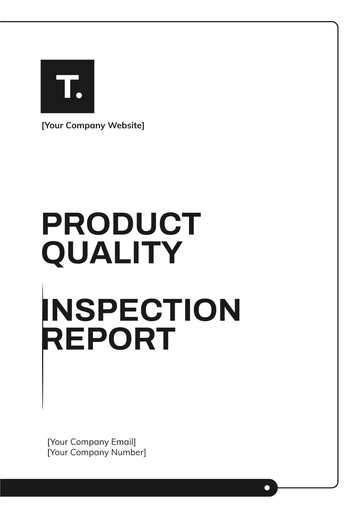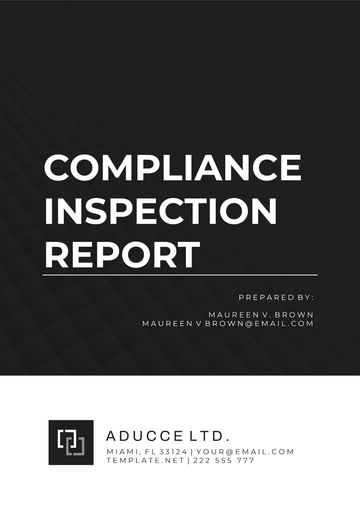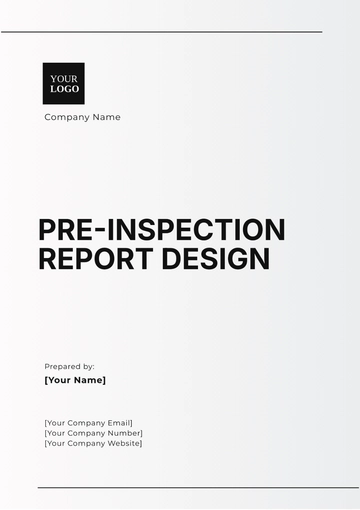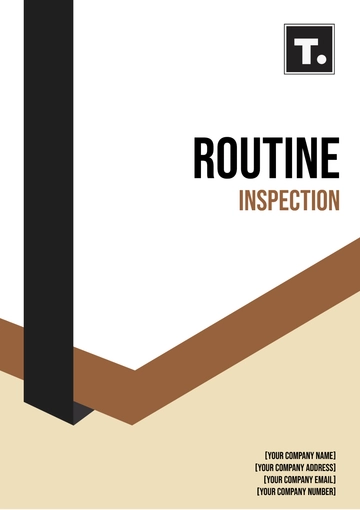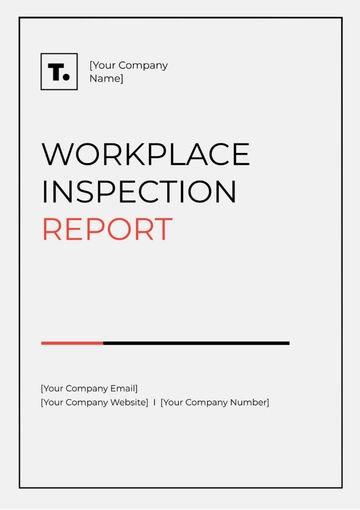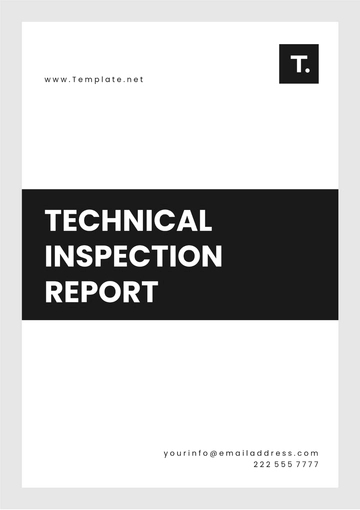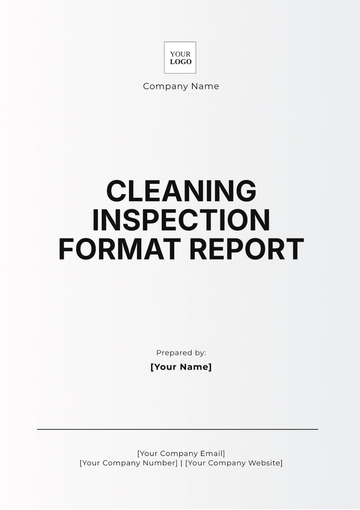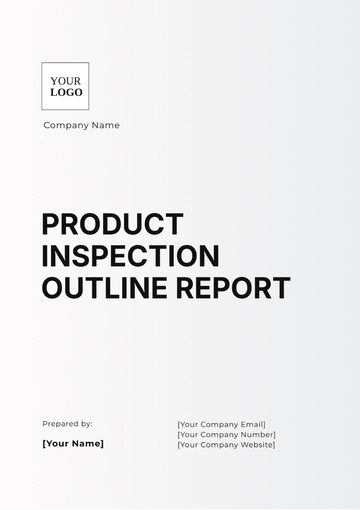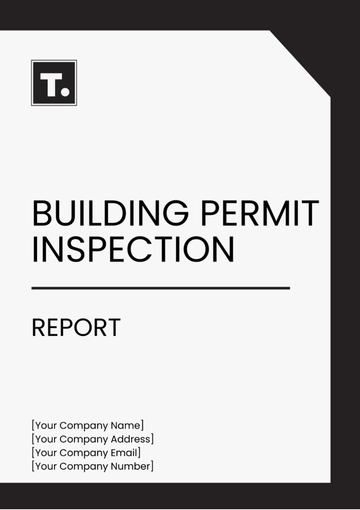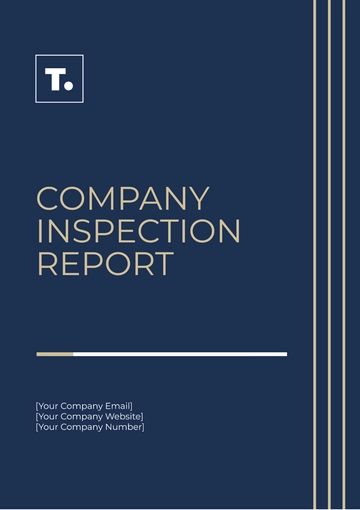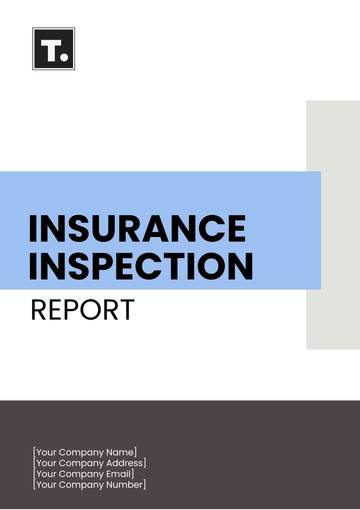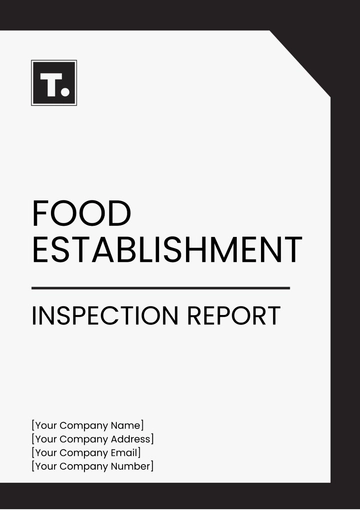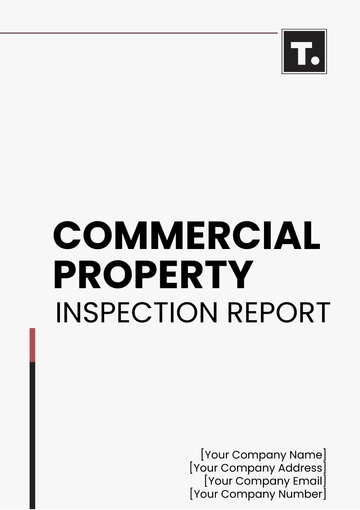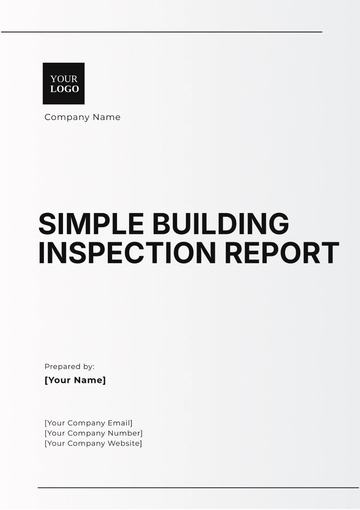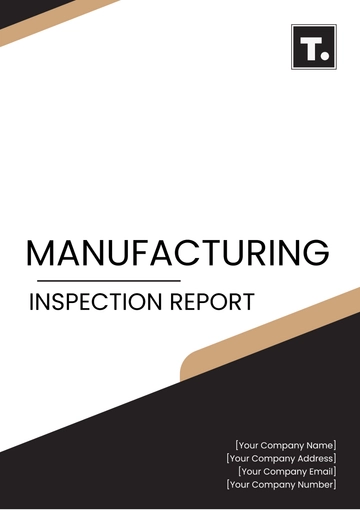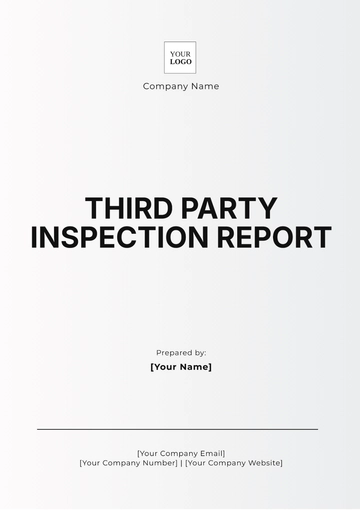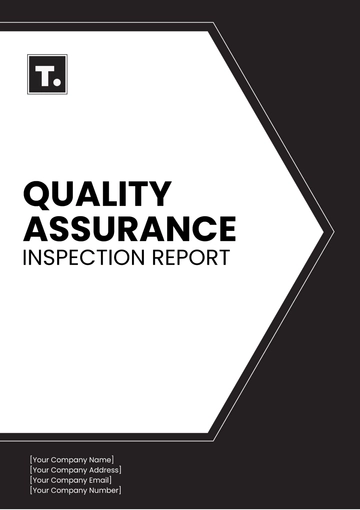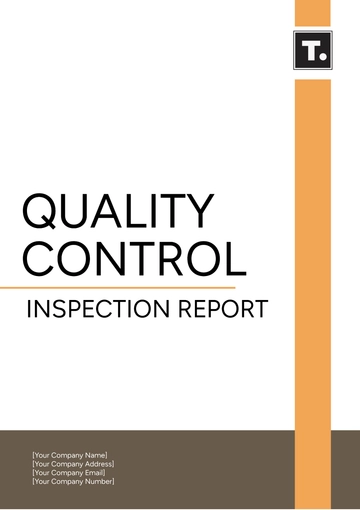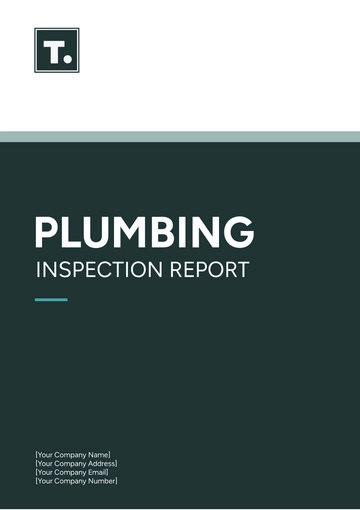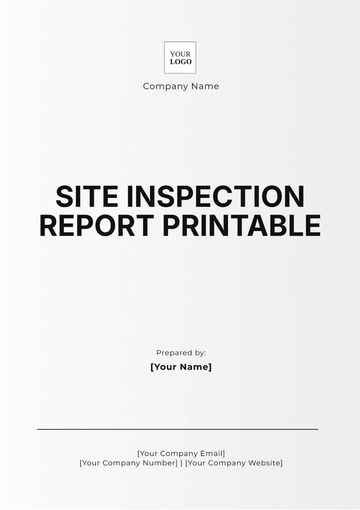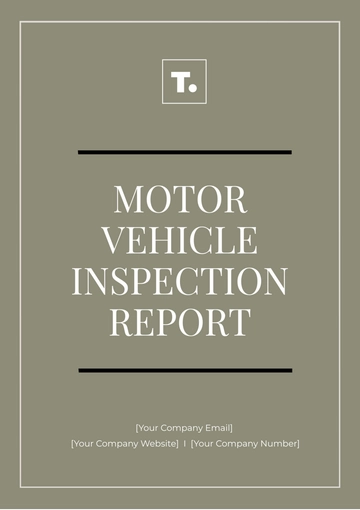Free Law Firm Inspection Report
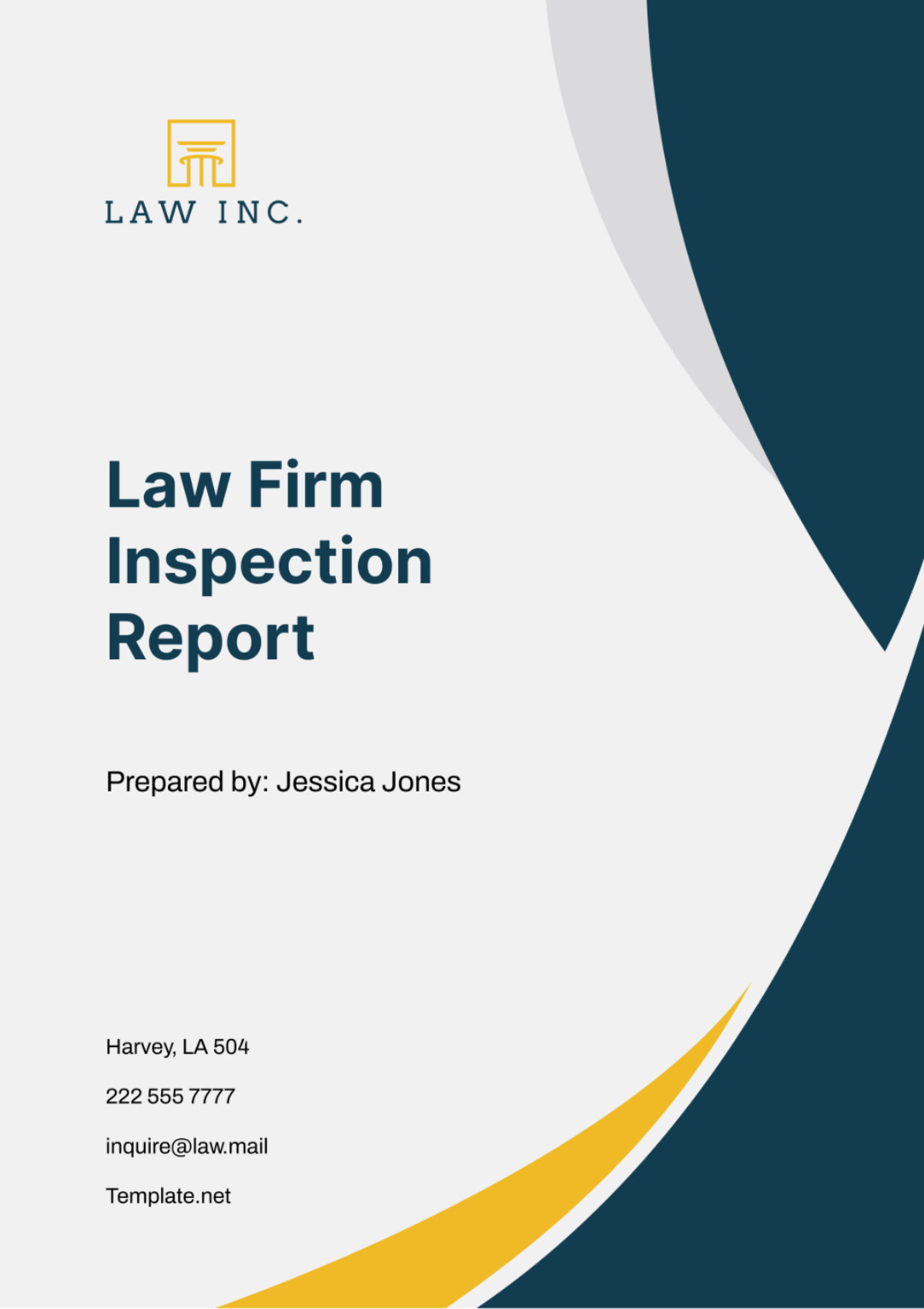
I. Executive Summary
A. Purpose of Inspection
The purpose of this inspection was to evaluate the overall compliance and performance of [Your Company Name], a law firm specializing in [Practice Areas], located at [Your Company Address], in [City, State], within the jurisdiction of [Jurisdiction]. The inspection aimed to ensure adherence to legal standards, regulations, and ethical guidelines governing the provision of legal services.
[Your Company Name]'s commitment to maintaining the highest standards of professionalism and legal compliance prompted this comprehensive inspection, which sought to identify strengths and areas for improvement within the firm's operations.
B. Key Findings
The inspection yielded valuable insights into [Your Company Name]'s compliance posture and operational effectiveness. Noteworthy findings include:
Key Strengths:
[Your Company Name] demonstrated exemplary client intake procedures, ensuring thorough conflict checks and diligent collection of client information. Additionally, the firm maintains comprehensive documentation of all client interactions and legal proceedings, reflecting a commitment to transparency and accountability.
Areas Requiring Improvement:
The inspection revealed inconsistencies in document retention practices, with some files lacking proper labeling and organization. Additionally, there were instances where staff members demonstrated a lack of awareness regarding recent updates to state bar association rules, highlighting the need for ongoing training and education.
Significant Compliance Issues or Concerns:
The discovery of outdated data security measures, which exposed sensitive client information to potential breaches. Additionally, there were instances where client confidentiality protocols were not strictly followed, posing risks to client privacy and trust.
C. Recommendations
Building upon the findings of the inspection, several recommendations have been formulated to assist [Your Company Name] in enhancing its compliance efforts and operational efficiency. These recommendations encompass:
Specific action items tailored to address identified areas of improvement:
Develop and implement a formalized AML compliance program, including comprehensive client due diligence procedures and regular training sessions for staff members.
Enhance documentation procedures for client interactions and legal proceedings to ensure consistency and accuracy in record-keeping practices.
Implement a centralized document management system to streamline file organization and retrieval processes, reducing the risk of errors and data loss.
Strategies for strengthening internal controls and compliance mechanisms:
Establish regular audits and reviews of internal controls to identify gaps and weaknesses in compliance practices, with clear accountability measures for addressing findings.
Enhance oversight mechanisms for monitoring employee conduct and adherence to ethical standards, including regular performance evaluations and training assessments.
Implement robust access controls and encryption measures for sensitive client information, with restricted access based on job roles and responsibilities.
II. Introduction
A. Scope of Inspection
Inspection Objectives
The inspection was conducted with the following objectives in mind
Evaluate [Your Company Name]'s compliance with applicable laws, regulations, and professional standards governing the practice of law.
Assess the effectiveness of [Your Company Name]'s internal controls and compliance mechanisms in ensuring legal and ethical conduct.
Identify areas for improvement and provide actionable recommendations to enhance [Your Company Name]'s compliance posture and operational efficiency.
Inspection Methodology
The inspection adopted a multifaceted approach, encompassing:
Review of [Your Company Name]'s policies, procedures, and documentation related to legal compliance.
Interviews with key personnel, including partners, associates, and support staff, to gain insights into operational practices and compliance culture.
On-site observation of [Your Company Name]'s day-to-day operations to assess adherence to established protocols and regulatory requirements.
Legal Framework
[Your Company Name] operates within a complex legal landscape shaped by statutes, regulations, case law, and professional standards. The legal framework governing the practice of law in [Jurisdiction] encompasses:
Statutory provisions governing the conduct of legal professionals and the operation of law firms.
Regulatory requirements imposed by [Relevant Regulatory Bodies] to safeguard client interests and uphold ethical standards.
Precedents established through judicial decisions and legal opinions, which serve as guiding principles for legal practice.
III. Compliance Assessment
A. Regulatory Compliance
Legal Requirements
[Your Company Name] is subject to various laws and regulations governing the practice of law in [Jurisdiction]. Key legal requirements include:
State Bar Association Rules of Professional Conduct
State statutes on attorney-client privilege
Federal regulations on anti-money laundering (AML) compliance
Consumer protection laws related to legal services
Analysis of [Your Company Name]'s Compliance with Legal Requirements
An assessment of [Your Company Name]'s compliance with applicable laws and regulations revealed areas of alignment as well as opportunities for improvement.
[Your Company Name] demonstrated strong adherence to confidentiality requirements outlined in state statutes.
However, there were instances of non-compliance with AML regulations, particularly in client due diligence procedures.
B. Compliance Gaps
Identified Gaps in Compliance
The inspection identified several compliance gaps within [Your Company Name]'s operations, including:
Inconsistent documentation of client risk assessments for AML compliance.
Lack of regular training sessions on updates to state bar association rules.
Failure to maintain adequate records of client communication, in violation of legal retention requirements.
Root Causes of Non-Compliance
The root causes of non-compliance were investigated to understand the underlying factors contributing to the identified gaps.
Insufficient resources allocated to staff training and continuing education programs.
Inadequate oversight mechanisms for monitoring compliance with evolving legal requirements.
Limited awareness among staff regarding the importance of document retention for legal and regulatory purposes.
C. Compliance Program Effectiveness
Evaluation of [Your Company Name]'s Compliance Program
[Your Company Name]'s existing compliance program was assessed for its effectiveness in ensuring adherence to legal and regulatory requirements.
The firm has established policies and procedures to address most compliance areas but lacks formalized AML compliance protocols.
Regular audits and internal reviews are conducted to identify areas of non-compliance and implement corrective measures.
Recommendations for Enhancing Compliance Efforts
Based on the findings, the following recommendations are proposed to strengthen [Your Company Name]'s compliance program:
Implement a formalized AML compliance program, including client due diligence procedures and suspicious activity reporting protocols.
Enhance staff training initiatives to ensure awareness of and compliance with state bar association rules and other legal requirements.
Establish robust document management protocols to ensure proper record-keeping and retention in accordance with applicable laws and regulations.
IV. Operational Review
A. Business Processes
Overview of Business Processes
[Your Company Name] operates a range of business processes to deliver legal services efficiently and effectively. These processes encompass:
Client intake and onboarding procedures
Case management and litigation support
Legal research and document preparation
Billing and financial management
Identification of Legal Risks Associated with Business Processes
Each business process entails inherent legal risks, which were evaluated during the inspection. Key areas of legal risk include:
Potential conflicts of interest in client intake processes
Risk of data breaches and confidentiality breaches in case management systems
Compliance with court deadlines and procedural requirements in litigation support
Business Process | Legal Risks Identified |
|---|---|
Client Intake | Potential conflicts of interest, inadequate conflict checks |
Case Management | Data breaches, confidentiality breaches, missed deadlines |
Legal Research | Inaccurate or outdated legal information, plagiarism risks |
Billing and Financial | Billing errors, failure to comply with fee agreements, accounting discrepancies |
B. Operational Controls
Assessment of Internal Controls
[Your Company Name]'s internal controls were evaluated to determine the effectiveness of measures in place to mitigate legal and operational risks.
Strong internal controls were observed in client intake procedures, with robust conflict checking mechanisms and client screening protocols.
However, deficiencies were noted in data security controls, particularly in access controls and encryption measures for sensitive client information.
Strengths and Weaknesses in Operational Controls
An analysis of operational controls revealed both strengths and weaknesses within [Your Company Name]'s operations.
Strengths included clear documentation of policies and procedures, regular staff training, and oversight mechanisms.
Weaknesses were identified in the enforcement of data security policies and procedures, highlighting the need for enhanced monitoring and enforcement measures.
C. Incident Response
Analysis of Incident Response Procedures
[Your Company Name]'s incident response procedures were assessed to evaluate the firm's readiness to address and mitigate legal and operational incidents.
The firm has established protocols for responding to client complaints, data breaches, and other incidents, with designated personnel responsible for each type of incident.
However, there is room for improvement in the documentation and communication of incident response procedures to ensure prompt and effective response in case of emergencies.
Recommendations for Improving Incident Response Preparedness
To enhance incident response preparedness, the following recommendations are proposed:
Conduct regular drills and simulations to test the effectiveness of incident response procedures and identify areas for improvement.
Enhance communication protocols to ensure all staff members are aware of their roles and responsibilities during incidents.
Review and update incident response plans regularly to incorporate lessons learned from past incidents and emerging threats.
V. Data Security and Privacy
A. Data Handling Practices
Data Collection and Storage
[Your Company Name] collects and stores various types of sensitive information as part of its legal services. Data handling practices include:
Client intake forms containing personal and financial information
Case files containing confidential legal documents and correspondence
Financial records related to billing and payment information
Assessment of Data Collection Practices
Data collection practices were evaluated to ensure compliance with data protection regulations and ethical standards. Findings include:
Adequate measures are in place to obtain client consent for data collection and processing.
However, there is room for improvement in obtaining explicit consent for the use of sensitive personal data.
B. Data Privacy Compliance
Review of Data Privacy Policies and Procedures
[Your Company Name]'s data privacy policies and procedures were reviewed to assess compliance with relevant laws and regulations, including:
General Data Protection Regulation (GDPR)
State and federal data protection laws
Industry-specific privacy standards
Data Privacy Policy Areas | Compliance Status |
|---|---|
Data Retention | Policy in place, but enforcement needs clarity |
Data Access Controls | Access controls implemented effectively |
Data Breach Response | Response plan documented, but lacks periodic testing |
Evaluation of Data Privacy Compliance
[Your Company Name]'s compliance with data privacy requirements was evaluated, revealing areas of strength and opportunities for improvement.
The firm demonstrates a strong commitment to safeguarding client data through robust access controls and encryption measures.
However, there are gaps in data retention policies and procedures, with inconsistencies in the application of retention periods for different types of data.
C. Data Breach Preparedness
Analysis of Data Breach Response Plans
[Your Company Name]'s preparedness to respond to data breaches was assessed, including the effectiveness of response plans and incident notification procedures.
The firm has established protocols for detecting, assessing, and responding to data breaches, with designated incident response teams and communication channels.
However, there is a need for regular testing and updating of response plans to ensure timely and effective incident response.
Recommendations for Strengthening Data Breach Preparedness
To enhance data breach preparedness, the following recommendations are proposed:
Conduct regular training and awareness programs for staff members on data security best practices and incident response procedures.
Implement periodic testing and simulation exercises to evaluate the effectiveness of data breach response plans and identify areas for improvement.
Review and update data retention policies and procedures to ensure compliance with legal requirements and industry standards, with clear guidelines on data disposal and retention periods.
VI. Conclusion
A. Summary of Findings
Recap of Key Findings from the Inspection
The inspection identified both strengths and areas for improvement within [Your Company Name]'s operations and compliance efforts. Key findings include:
Strong adherence to legal and ethical standards in client representation and confidentiality practices.
Opportunities for enhancement in data security and privacy compliance, particularly in data retention and incident response preparedness.
B. Conclusion
Overall Assessment of [Your Company Name]'s Compliance and Operational Performance
[Your Company Name] has demonstrated a commitment to upholding legal and ethical standards in the provision of legal services. While areas for improvement have been identified, the firm's proactive approach to compliance and willingness to implement recommended changes position it well for continued success.
Next Steps
[Your Company Name] is encouraged to prioritize the implementation of recommended actions to address compliance gaps and enhance operational efficiency.
Follow-up Procedures for Monitoring Compliance Progress
Regular monitoring and evaluation of compliance efforts are recommended to track progress and ensure sustained adherence to legal and regulatory requirements. This may include periodic audits, training sessions, and reviews of policies and procedures.
- 100% Customizable, free editor
- Access 1 Million+ Templates, photo’s & graphics
- Download or share as a template
- Click and replace photos, graphics, text, backgrounds
- Resize, crop, AI write & more
- Access advanced editor
Ensure thorough documentation of inspections with Template.net's Law Firm Inspection Report Template. This editable and customizable document streamlines the reporting process, ensuring accuracy and professionalism. Crafted by legal experts, it aligns with industry standards and best practices. Editable in our Ai Editor Tool for seamless customization and integration into your firm's inspection procedures.
You may also like
- Sales Report
- Daily Report
- Project Report
- Business Report
- Weekly Report
- Incident Report
- Annual Report
- Report Layout
- Report Design
- Progress Report
- Marketing Report
- Company Report
- Monthly Report
- Audit Report
- Status Report
- School Report
- Reports Hr
- Management Report
- Project Status Report
- Handover Report
- Health And Safety Report
- Restaurant Report
- Construction Report
- Research Report
- Evaluation Report
- Investigation Report
- Employee Report
- Advertising Report
- Weekly Status Report
- Project Management Report
- Finance Report
- Service Report
- Technical Report
- Meeting Report
- Quarterly Report
- Inspection Report
- Medical Report
- Test Report
- Summary Report
- Inventory Report
- Valuation Report
- Operations Report
- Payroll Report
- Training Report
- Job Report
- Case Report
- Performance Report
- Board Report
- Internal Audit Report
- Student Report
- Monthly Management Report
- Small Business Report
- Accident Report
- Call Center Report
- Activity Report
- IT and Software Report
- Internship Report
- Visit Report
- Product Report
- Book Report
- Property Report
- Recruitment Report
- University Report
- Event Report
- SEO Report
- Conference Report
- Narrative Report
- Nursing Home Report
- Preschool Report
- Call Report
- Customer Report
- Employee Incident Report
- Accomplishment Report
- Social Media Report
- Work From Home Report
- Security Report
- Damage Report
- Quality Report
- Internal Report
- Nurse Report
- Real Estate Report
- Hotel Report
- Equipment Report
- Credit Report
- Field Report
- Non Profit Report
- Maintenance Report
- News Report
- Survey Report
- Executive Report
- Law Firm Report
- Advertising Agency Report
- Interior Design Report
- Travel Agency Report
- Stock Report
- Salon Report
- Bug Report
- Workplace Report
- Action Report
- Investor Report
- Cleaning Services Report
- Consulting Report
- Freelancer Report
- Site Visit Report
- Trip Report
- Classroom Observation Report
- Vehicle Report
- Final Report
- Software Report
